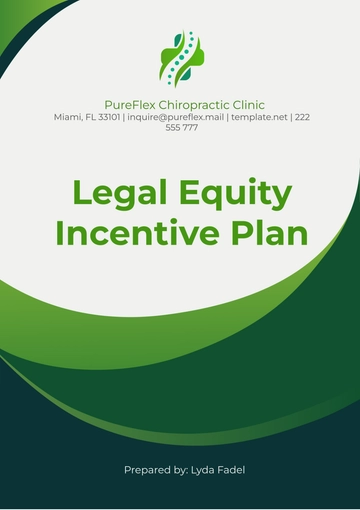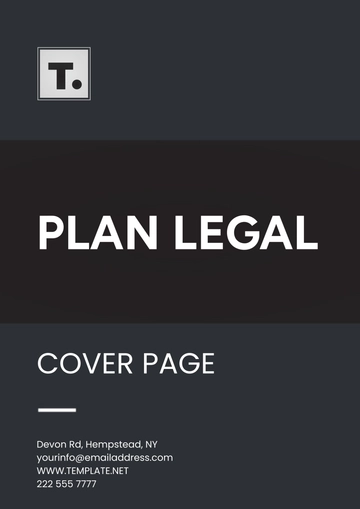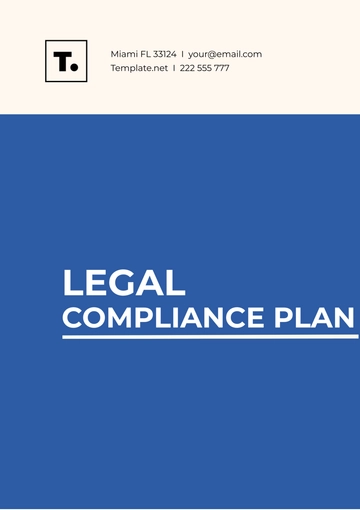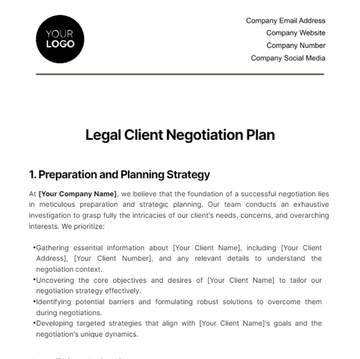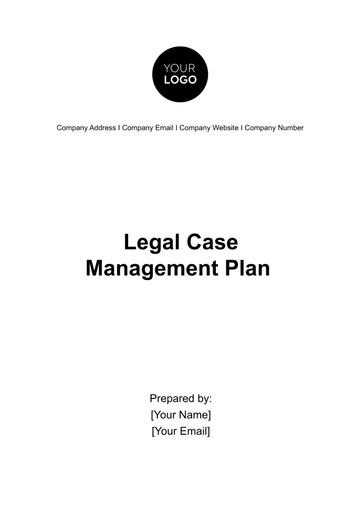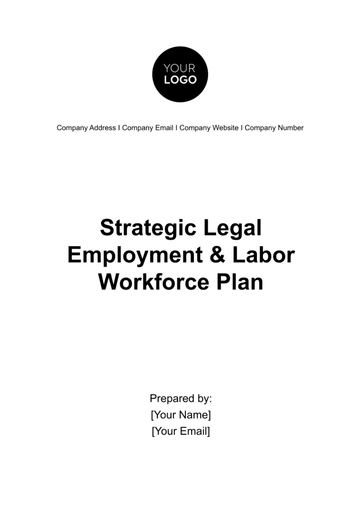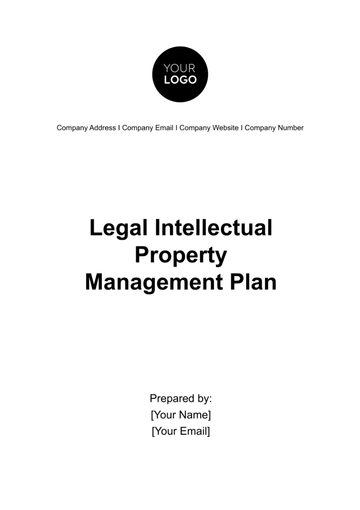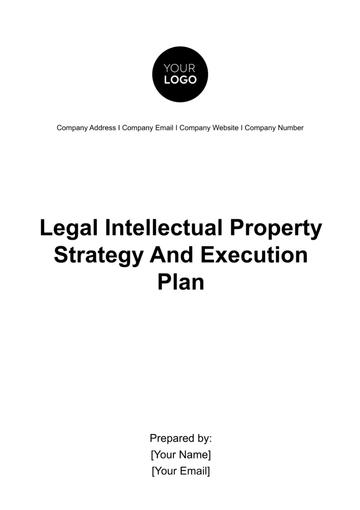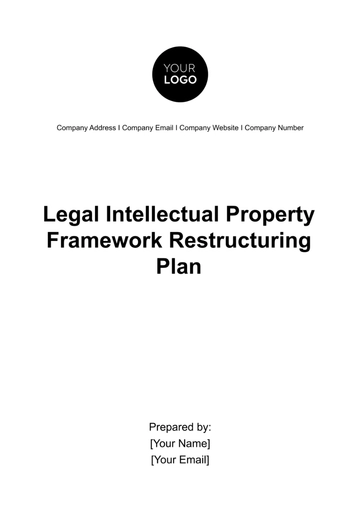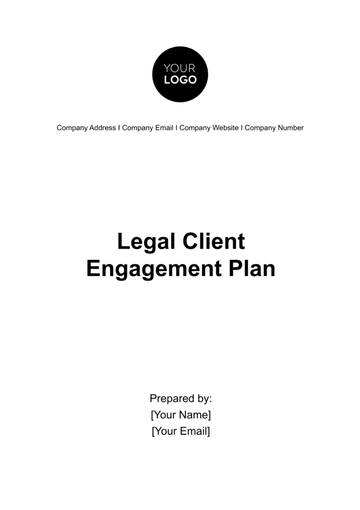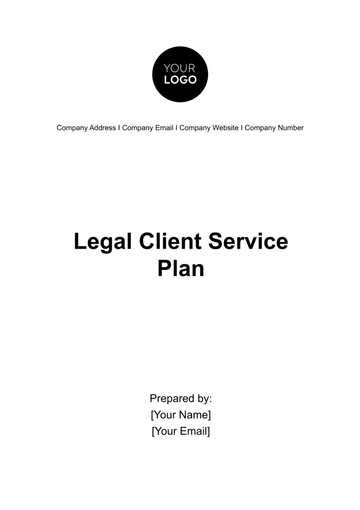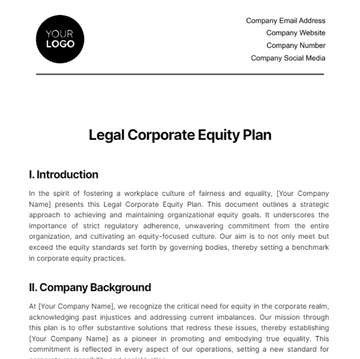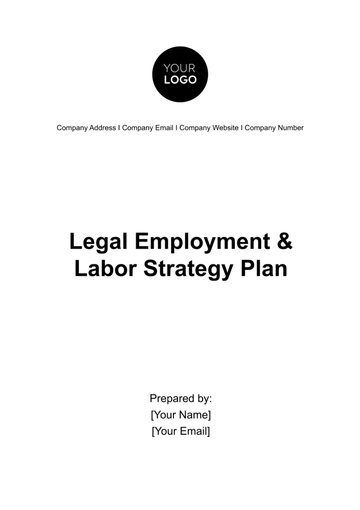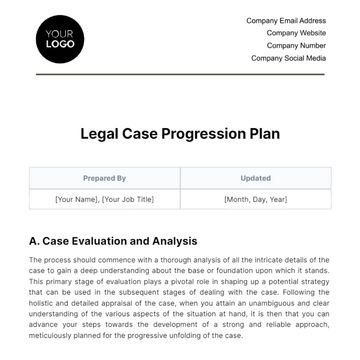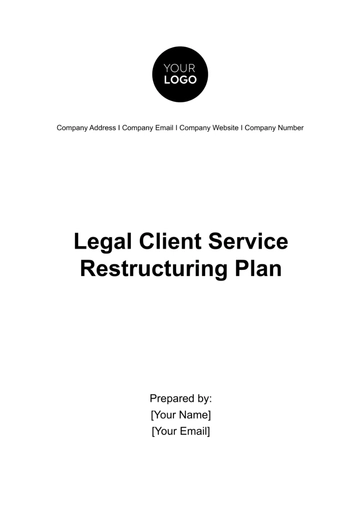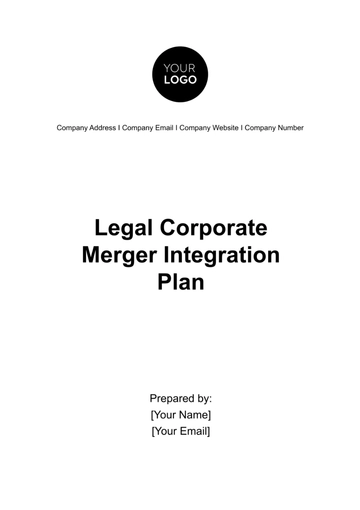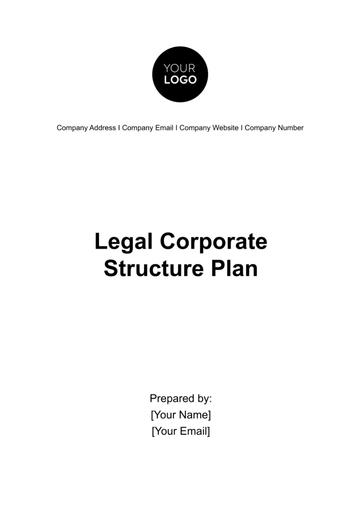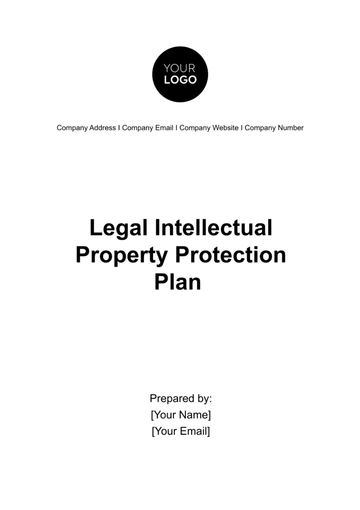Free Legal Corporate Structure Plan
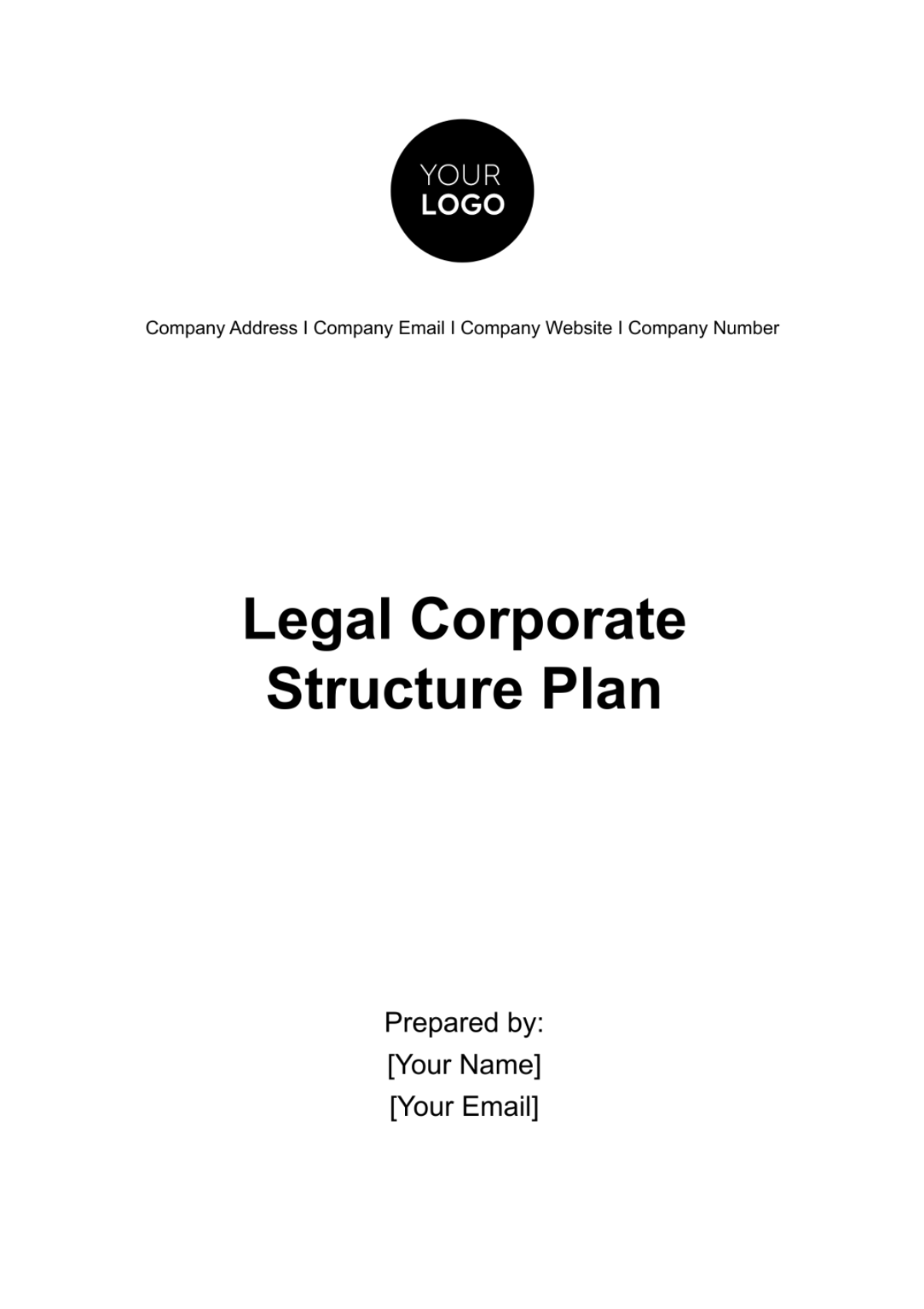
I. Introduction
A. Purpose of the Plan
The Legal Corporate Structure Plan serves as a roadmap for organizing [Your Company Name]'s legal entities to optimize efficiency, minimize risk, and ensure compliance with regulatory requirements. By delineating clear ownership and governance structures, this plan aims to facilitate strategic decision-making and enhance accountability across the organization.
B. Scope and Applicability
This plan encompasses all aspects of [Your Company Name]'s legal structure, including its subsidiaries, joint ventures, and affiliated entities. It applies to all stakeholders involved in corporate governance, including shareholders, board members, executives, and legal advisors. The plan's applicability extends to all jurisdictions where [Your Company Name] operates, ensuring consistency and compliance across diverse regulatory environments.
C. Background Information
[Your Company Name], founded in 1951, has evolved into a global conglomerate with operations spanning multiple industries and geographic regions. Over the years, [Your Company Name] has grown through strategic acquisitions, partnerships, and organic expansion, resulting in a complex corporate structure. The Legal Corporate Structure Plan addresses the need to rationalize and optimize this structure to better align with [Your Company Name]'s evolving business objectives.
II. Executive Summary
A. Overview of the Current Corporate Structure
At present, [Your Company Name] operates as a decentralized entity with numerous subsidiaries, joint ventures, and strategic partnerships. While this structure has facilitated growth and diversification, it has also introduced complexity and inefficiencies. The current structure lacks uniformity in governance and ownership, leading to challenges in decision-making and accountability.
B. Key Objectives of the Proposed Corporate Structure
The proposed Corporate Structure Plan seeks to address these challenges by consolidating entities, clarifying ownership relationships, and enhancing governance mechanisms. Key objectives include streamlining operations, optimizing tax planning, and improving regulatory compliance. By adopting a more cohesive and transparent structure, [Your Company Name] aims to position itself for sustained growth and long-term success.
III. Company Overview
The section titled "Company Overview" gives a briefly detailed and clear overview of [Your Company Name]. The information encapsulates crucial aspects such as its legal status which provides information on the corporation's adherence to laws, its mission that includes its core purpose and direction, and its organizational structure that presents the hierarchy and the operational arrangement within the corporation.
Aspect | Details |
|---|---|
Name | [Your Company Name] |
Legal Form | Publicly traded corporation |
Jurisdiction | [Your Company Address] |
Mission | To innovate and create value for stakeholders through exceptional products and services. |
Vision | To be a global leader in every industry we operate in. |
IV. Legal Entities
In this particular section, we provide a comprehensive outline detailing the various legal entities that are in association with the [Your Company Name]. This includes comprehensive information about its parent company, a list of its subsidiaries or companies that it has a controlling interest in, as well as any affiliated entities or those entities with which it shares a strategic alliance or formal agreement for mutual benefit.
A. Parent Company
Aspect | Details |
|---|---|
Name | [Your Company Name] |
Legal Form | Corporation |
Jurisdiction | [Your Company Name] |
Ownership Structure | Publicly traded with majority ownership held by institutional investors. |
Governance Structure | Board of Directors oversees corporate strategy and major decisions. |
B. Subsidiary Companies
Aspect | [Company A] | [Company B] |
|---|---|---|
Name | [Company A] Solutions LLC | [Company B] Inc |
Legal Form | Limited Liability Company | Corporation |
Jurisdiction | California, USA | New York, USA |
Ownership Structure | 100% owned by [Your Company Name] | 80% owned by [Your Company Name], 20% owned by [Your Partner Company Name / Second Party]. |
Purpose and Activities | Provides software development and IT consulting services. | Invests in healthcare startups and manages a portfolio of healthcare assets. |
Governance Structure | Managed by a board of directors appointed by [Your Company Name]. | Jointly managed by [Your Company Name] and [Your Partner Company Name / Second Party]. |
C. Affiliated Entities
Aspect | [Company C] Joint Venture |
|---|---|
Name | [Company C] Joint Venture LLP |
Legal Form | Limited Liability Partnership |
Jurisdiction | London, UK |
Ownership Structure | 50% owned by [Your Company Name], 50% owned by [Your Partner Company Name / Second Party] |
Purpose and Activities | Operates a chain of luxury hotels and resorts. |
Governance Structure | Jointly managed by representatives from [Your Company Name] and [Your Partner Company Name / Second Party]. |
V. Ownership Structure
A. Shareholders
The ownership of [Your Company Name] is dispersed or spread out across a broad spectrum of both institutional and individual investors. This means that there is not one single entity or institution that holds a significant, controlling interest or majority stake in the company. In terms of the voting rights of shareholders, the corporation operates on a proportional system. That is, the voting rights of each shareholder are directly related to the number of shares they own. This allows for a fair representation in the decision-making processes of the company. [Your Company Name] prioritizes maintaining transparency in its operations. This is achieved by keeping its shareholders updated on a regular basis via several means. Such means include financial reports that inform shareholders about the firm's financial performance, annual meetings that provide a forum for direct interaction between the management and shareholders, and other various channels of communication.
B. Other Equity Holders
In addition to individuals or entities that hold common shares in [Your Company Name], there may be other types of equity holders involved in the company. For instance, preferred stockholders might be included in the corporation's structure. These individuals typically enjoy certain advantages over common shareholders, the most distinct of which is the right to receive dividends before they are distributed to common shareholders. This is known as preferential dividend rights. Additionally, the corporation may include individuals who are members of limited liability companies (LLCs). These people hold what are known as membership interests in their respective LLCs. A membership interest confers certain rights upon the holder, including the right to vote on important company matters and the right to receive a share of the company's profits when they are distributed.
VI. Governance Framework
A. Board of Directors
[Your Company Name]'s Board of Directors comprises experienced individuals from diverse backgrounds who provide strategic guidance and oversight to the company's management team. The board is responsible for approving major corporate decisions, including mergers and acquisitions, capital expenditures, and executive appointments. Committees within the board, such as audit, compensation, and governance committees, ensure thorough examination and oversight of key corporate functions.
Aspect | Details |
|---|---|
Composition | Comprised of experienced individuals from diverse backgrounds, including industry experts, former executives, and independent directors. |
Qualifications | Directors possess a combination of skills, knowledge, and experience relevant to [Your Company Name]'s business operations and strategic objectives. |
Roles and Responsibilities | Provide strategic guidance and oversight to executive management. Approve major corporate decisions, including mergers and acquisitions, capital expenditures, and executive appointments. |
Committees | Audit, Compensation, Governance, and other specialized committees ensure thorough examination and oversight of key corporate functions. |
Meeting Procedures | Regularly scheduled board meetings, supplemented by committee meetings and ad-hoc sessions as needed. Meetings may be conducted in-person or virtually, in compliance with corporate bylaws. |
B. Executive Management
Position | Name | Responsibilities |
|---|---|---|
CEO | [Name] | Sets strategic direction and vision for [Your Company Name]. Oversees overall operations and performance of the company. |
CFO | [Name] | Manages financial planning, budgeting, and reporting. Provides strategic financial guidance to support business decisions. |
COO | [Name] | Oversees day-to-day operations and execution of strategic initiatives. Ensures operational efficiency and effectiveness. |
CMO | [Name] | Leads marketing strategy and campaigns to enhance brand visibility and drive customer engagement and acquisition. |
CHRO | [Name] | Develops and implements human resources strategies to attract, retain, and develop top talent. Manages employee relations. |
The executive management team, led by the CEO, is responsible for implementing the strategic direction set by the board and managing day-to-day operations. This team includes executives overseeing various functional areas such as finance, operations, marketing, and human resources. Regular communication and collaboration between the board and executive management ensure alignment of objectives and effective execution of corporate strategy.
VII. Regulatory Compliance
A. Corporate Governance Standards
[Your Company Name] adheres to rigorous corporate governance standards, including those outlined in the Sarbanes-Oxley Act and other relevant regulations. The company maintains a comprehensive set of policies and procedures to promote transparency, accountability, and ethical behavior at all levels of the organization. Regular audits and internal controls ensure compliance with these standards and mitigate the risk of fraud or misconduct.
B. Securities Regulations
As a publicly traded company, [Your Company Name] is subject to extensive securities regulations enforced by the Securities and Exchange Commission (SEC) and other regulatory bodies. The company files periodic reports with the SEC, including annual 10-K reports, quarterly 10-Q reports, and current reports on Form 8-K, to disclose material information to shareholders and the public. Compliance with securities regulations helps maintain investor confidence and ensures fair and transparent capital markets.
VIII. Risk Management
A. Liability Protection
[Your Company Name] maintains comprehensive liability insurance coverage to protect against legal claims and financial losses arising from litigation, accidents, or other unforeseen events. The company also implements risk management policies and procedures to identify, assess, and mitigate potential risks across its operations. By proactively managing liabilities, [Your Company Name] aims to safeguard its assets and preserve shareholder value.
B. Insurance Coverage
In addition to liability insurance, [Your Company Name] carries insurance coverage for property, casualty, directors' and officers' liability, and other relevant risks. These insurance policies provide financial protection in the event of property damage, business interruption, or lawsuits alleging negligence or misconduct by company executives. Regular reviews of insurance coverage ensure alignment with the company's evolving risk profile and business needs.
IX. Implementation Plan
A. Timeline and Milestones
The plan for the implementation of the Legal Corporate Structure, a crucial step for our organization, has been mapped out to take place over the course of the upcoming 12 to 18 months. This implementation process has been split into various phases, with the execution timeline stretched across the aforesaid duration. Notably, each phase is uniquely designed to carry specific objectives and accompanying tasks that need to be executed within clear deadlines. To ensure that the implementation remains on track, regular reviews of the progress will take place. These reviews will gauge the attained milestones and appraise the need for any adjustments to the plan. The revisions will serve as a corrective measure when deviations are noted and will facilitate realignment towards our set objectives.
B. Responsible Parties
The Legal department has taken the responsibility for overseeing the implementation process. Their important function will require them to work closely with executive management as well as external advisors whenever necessary. This close cooperation is essential for the efficient functioning of the process. Meanwhile, key stakeholders have also been assigned crucial duties. These stakeholders include board members, senior executives, and legal counsel among others. Their crucial role involves participating actively in decision-making, and they will play major roles in ensuring that the execution of the plan is successful. They will take part in key aspects of the plan and their input in decision-making will significantly affect the course and final outcome of the plan.
C. Resource Allocation
To successfully implement the plan, we will ensure allocation of sufficient resources. This encompasses aspects such as personnel, advanced technology, and financial support. The process might entail recruiting extra staff members to handle increased workload or specific tasks related to the plan. Additionally, we may also need to invest in technological infrastructure to ensure smooth and efficient operations. Furthermore, there could be a need to engage experts in the fields of law, finance, or operations externally to help navigate through specific challenges that may arise during the execution of the plan. Such comprehensive support will significantly contribute to the effective implementation of the plan.
D. Communication Plan
A comprehensive communication plan will be developed to keep stakeholders informed and engaged throughout the implementation process. This will include regular updates through company meetings, memos, and other internal communication channels, as well as external communication to shareholders, regulators, and other external parties as needed. Transparent and timely communication will be critical to building trust and ensuring alignment with the company's objectives.
X. Monitoring and Review
Aspect | Details |
|---|---|
Key Performance Indicators (KPIs) | Metrics related to operational efficiency, financial performance, regulatory compliance, and stakeholder satisfaction. |
Regular Audits and Assessments | Conducted internally by the company's legal and compliance teams or externally by independent auditors or consultants. |
Plan Updates and Revisions | Prompted by factors such as mergers and acquisitions, changes in regulatory environments, shifts in market dynamics, or feedback from internal and external stakeholders. |
A. Key Performance Indicators
[Your Company Name] will establish key performance indicators (KPIs) to measure the effectiveness of the new corporate structure and governance framework. These KPIs may include metrics related to operational efficiency, financial performance, regulatory compliance, and stakeholder satisfaction. Regular monitoring of KPIs will enable the company to identify areas for improvement and make data-driven decisions to drive continuous improvement.
B. Regular Audits and Assessments
The Legal Corporate Structure Plan will undergo regular audits and assessments to evaluate its effectiveness and identify any areas requiring adjustment or enhancement. These audits may be conducted internally by the company's legal and compliance teams or externally by independent auditors or consultants. Findings from audits and assessments will be used to refine policies, procedures, and governance practices to ensure ongoing compliance and alignment with best practices.
C. Plan Updates and Revisions
As business conditions evolve and regulatory requirements change, [Your Company Name] will update and revise the Legal Corporate Structure Plan as needed to remain agile and responsive to emerging challenges and opportunities. Updates may be prompted by factors such as mergers and acquisitions, changes in regulatory environments, shifts in market dynamics, or feedback from internal and external stakeholders. By maintaining a dynamic and adaptive approach to corporate governance, [Your Company Name] will position itself for sustained success in a rapidly changing business landscape.
- 100% Customizable, free editor
- Access 1 Million+ Templates, photo’s & graphics
- Download or share as a template
- Click and replace photos, graphics, text, backgrounds
- Resize, crop, AI write & more
- Access advanced editor
Introducing the Legal Corporate Structure Plan Template from Template.net. This comprehensive tool offers an editable and customizable solution for organizing your company's legal entities with ease. With our intuitive AI Editor Tool, streamline operations, enhance compliance, and optimize governance effortlessly. Take control of your corporate structure today with our user-friendly template.
You may also like
- Finance Plan
- Construction Plan
- Sales Plan
- Development Plan
- Career Plan
- Budget Plan
- HR Plan
- Education Plan
- Transition Plan
- Work Plan
- Training Plan
- Communication Plan
- Operation Plan
- Health And Safety Plan
- Strategy Plan
- Professional Development Plan
- Advertising Plan
- Risk Management Plan
- Restaurant Plan
- School Plan
- Nursing Home Patient Care Plan
- Nursing Care Plan
- Plan Event
- Startup Plan
- Social Media Plan
- Staffing Plan
- Annual Plan
- Content Plan
- Payment Plan
- Implementation Plan
- Hotel Plan
- Workout Plan
- Accounting Plan
- Campaign Plan
- Essay Plan
- 30 60 90 Day Plan
- Research Plan
- Recruitment Plan
- 90 Day Plan
- Quarterly Plan
- Emergency Plan
- 5 Year Plan
- Gym Plan
- Personal Plan
- IT and Software Plan
- Treatment Plan
- Real Estate Plan
- Law Firm Plan
- Healthcare Plan
- Improvement Plan
- Media Plan
- 5 Year Business Plan
- Learning Plan
- Marketing Campaign Plan
- Travel Agency Plan
- Cleaning Services Plan
- Interior Design Plan
- Performance Plan
- PR Plan
- Birth Plan
- Life Plan
- SEO Plan
- Disaster Recovery Plan
- Continuity Plan
- Launch Plan
- Legal Plan
- Behavior Plan
- Performance Improvement Plan
- Salon Plan
- Security Plan
- Security Management Plan
- Employee Development Plan
- Quality Plan
- Service Improvement Plan
- Growth Plan
- Incident Response Plan
- Basketball Plan
- Emergency Action Plan
- Product Launch Plan
- Spa Plan
- Employee Training Plan
- Data Analysis Plan
- Employee Action Plan
- Territory Plan
- Audit Plan
- Classroom Plan
- Activity Plan
- Parenting Plan
- Care Plan
- Project Execution Plan
- Exercise Plan
- Internship Plan
- Software Development Plan
- Continuous Improvement Plan
- Leave Plan
- 90 Day Sales Plan
- Advertising Agency Plan
- Employee Transition Plan
- Smart Action Plan
- Workplace Safety Plan
- Behavior Change Plan
- Contingency Plan
- Continuity of Operations Plan
- Health Plan
- Quality Control Plan
- Self Plan
- Sports Development Plan
- Change Management Plan
- Ecommerce Plan
- Personal Financial Plan
- Process Improvement Plan
- 30-60-90 Day Sales Plan
- Crisis Management Plan
- Engagement Plan
- Execution Plan
- Pandemic Plan
- Quality Assurance Plan
- Service Continuity Plan
- Agile Project Plan
- Fundraising Plan
- Job Transition Plan
- Asset Maintenance Plan
- Maintenance Plan
- Software Test Plan
- Staff Training and Development Plan
- 3 Year Plan
- Brand Activation Plan
- Release Plan
- Resource Plan
- Risk Mitigation Plan
- Teacher Plan
- 30 60 90 Day Plan for New Manager
- Food Safety Plan
- Food Truck Plan
- Hiring Plan
- Quality Management Plan
- Wellness Plan
- Behavior Intervention Plan
- Bonus Plan
- Investment Plan
- Maternity Leave Plan
- Pandemic Response Plan
- Succession Planning
- Coaching Plan
- Configuration Management Plan
- Remote Work Plan
- Self Care Plan
- Teaching Plan
- 100-Day Plan
- HACCP Plan
- Student Plan
- Sustainability Plan
- 30 60 90 Day Plan for Interview
- Access Plan
- Site Specific Safety Plan
